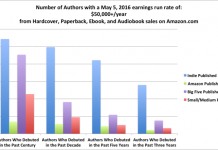 That’s the title of an article in the mediaIDEAS blog. Here’s a snippet:
That’s the title of an article in the mediaIDEAS blog. Here’s a snippet:
At first glance, it makes no sense whatsoever that I can buy a year’s subscription to Wired’s UK magazine for £24, a price that would get me just ten issues of the iPad version. However, what’s saved on printing and trucks is more than made up for in additional development costs, it seems. Wired’s Chris Anderson said recently that developing its iPad application currently requires 20% extra resources over the print version, due to the inclusion of interactive elements and video.
In time, when production costs for ‘whizz-bang’ extra features reduce and its audience grows, maybe Android will emerge as the perfect home for tablet-based magazines. That said, maybe Apple will make iOS more publisher friendly by reducing its 30% cut or improving terms for publishers in other ways. Either way – for now tablet magazines remain an expensive luxury. I’m sticking with paper.


































” However, what’s saved on printing and trucks is more than made up for in additional development costs, it seems. Wired’s Chris Anderson said recently that developing its iPad application currently requires 20% extra resources over the print version, due to the inclusion of interactive elements and video.”
i say BS. as a designer and someone who works in print media, there is NO way that that the cost of doing a digital version costs as much as a print version, even with things like apple taking a 30% cut. it’s definitely greed here.
Franko, methinks you’re not considering the whole ‘subscribers are no longer owned by the content provider’ angle that is a primary revenue generator for the magazines. Without that revenue stream (or one that is greatly diminished by new ad revenue models), it’s quite hard to make an educated judgment as to the viability of ‘digital magazines.’ My guess is that if you really had a true idea of what was going on, you wouldn’t be allowed to share your input with us.
Now that’s not to say people aren’t being greedy (I’m sometimes not sure why customers are the only ones “allowed” to be “greedy”, but I digress), but let’s not jump to conclusions or make assumptions because we know some pieces of the puzzle.
I agree Franko. This is becoming the standard line by these publishers, designed to cover up incompetence and failure.
The truth is that huge mistakes were made in the development of these tablet magazines, how they were designed and produced. Recouping the investment has also been factored into the cost over a period of only one year instead of several, leading to the ridiculous pricing.
It is clear that there was an uncontrolled rush into this market. Competent planning and assessment of what readers actually wanted was absent. Resources were over engaged. Complexity and geeky technology was embraced against all market logic. The result was a right royal mess.
Creative accounting can make any situation look dire if that’s the effect you wish to portray. The movie biz has been doing this for many years.
Are the accountants looking at the magazine operation in isolation from other aspects of the company? Are they properly amortizing the substantial front-loaded investment that building an app shell for a magazine entails? Are they separating out R&D expenditures? These are some of the things that would tell us whether a digital magazine could become profitable.
It might be that this industry has an interest in poor mouthing their situation as they negotiate terms for this new world.
Discrete magazine “apps” may provide rich content, but as this article points out, it tends to cost the publishers more than they expected. Besides, as a consumer, it takes away from the one-stop common UI that I want.
The Nook Color and Zinio approaches seem to be the ones that make the most business sense. They leverage the current print layouts of the publishers with additional article views to allow folks to zoom in and such.
Wired’s Chris Anderson is much more aware of his magazine’s costs than his critics, particularly when he clarifies those costs by noting that the added expenses lay in adding “interactive elements and video.”
Making text and objects move around is some appealing fashion will always take more time than just keeping those same texts and objects static. You have to try something, see what it looks like, and then try again–over and over. Video is even more expensive. Last fall I watched the filming of a political ad featuring Bill Gates Sr. next door to my apartment. Here is its content done as a printed story, an interactive cartoon, and a video.
Writing as if the events had happened would have been very cheap, something I can type a few seconds: “Bill Gates Sr. sat atop a carnival dump tank and said, “My new tax will dunk the rich.” Kids then threw balls, hitting a target, and Gate’s plunges into the water.” Total cost of writing: no more than a few dollars.
Making a animated cartoon out of it would have taken a few hours for an artist and animator working at a computer. Total cost: maybe a few hundred dollars. And yes, that’s cheaper today than it was in the days of classic Disney animation. But it’s still not as cheap as writing.
Filming it as a video meant scouting a location, bringing in a crew and cameras, scripting it, and shooting the various scenes over and over again to get everything right. There also had to be a dunk tank rented and delivered. It had to be filled with warm water for the 80+ year-old Gates. I didn’t see the final figures, but the cost had to be in the thousands of dollars, all for just 30 seconds of screen time. And keep in mind that Gates and the kids were participating for free. In most cases, you’d also have to pay actors. It was also done locally. News and feature stories often mean flying people thousands of miles.
Actual costs in other situations will vary, but the ratio of costs will remain much the same. Text is cheaper than animation, which is far cheaper than video. And the heavy staffing costs of video production offer little hope that it’ll ever be cheap.
That means that an iPad magazine that’s no different from a printed edition will cost little more to produce, just a change in the layout. But one that adds interactivity and video will, as Chris Andersen notes, cost much more to produce and that means a much higher subscription cost.
I see this sort of thing all the time at one of my jobs. Saturday, I talked with someone doing a movie short. She was spending some four hours auditioning actors, just one of the many things she needed to do to prepare. The result of all that work would be a three-and-a-half minute video.
I might add that this cost difference in media technique is one reason I don’t want to see the ways we are informed or entertained move to the pricier mediums. You don’t have to be rich to write a book. You have to be rich to finance a movie. We don’t want only the rich to be the only ones telling the stories we hear.
Frank wrote:
“Creative accounting can make any situation look dire if that’s the effect you wish to portray. The movie biz has been doing this for many years.”
This is something many people don’t realise. And the idea that Mr Anderson is actually telling us the truth of the costs is really really far fetched. Ass covering is the theme of the day.